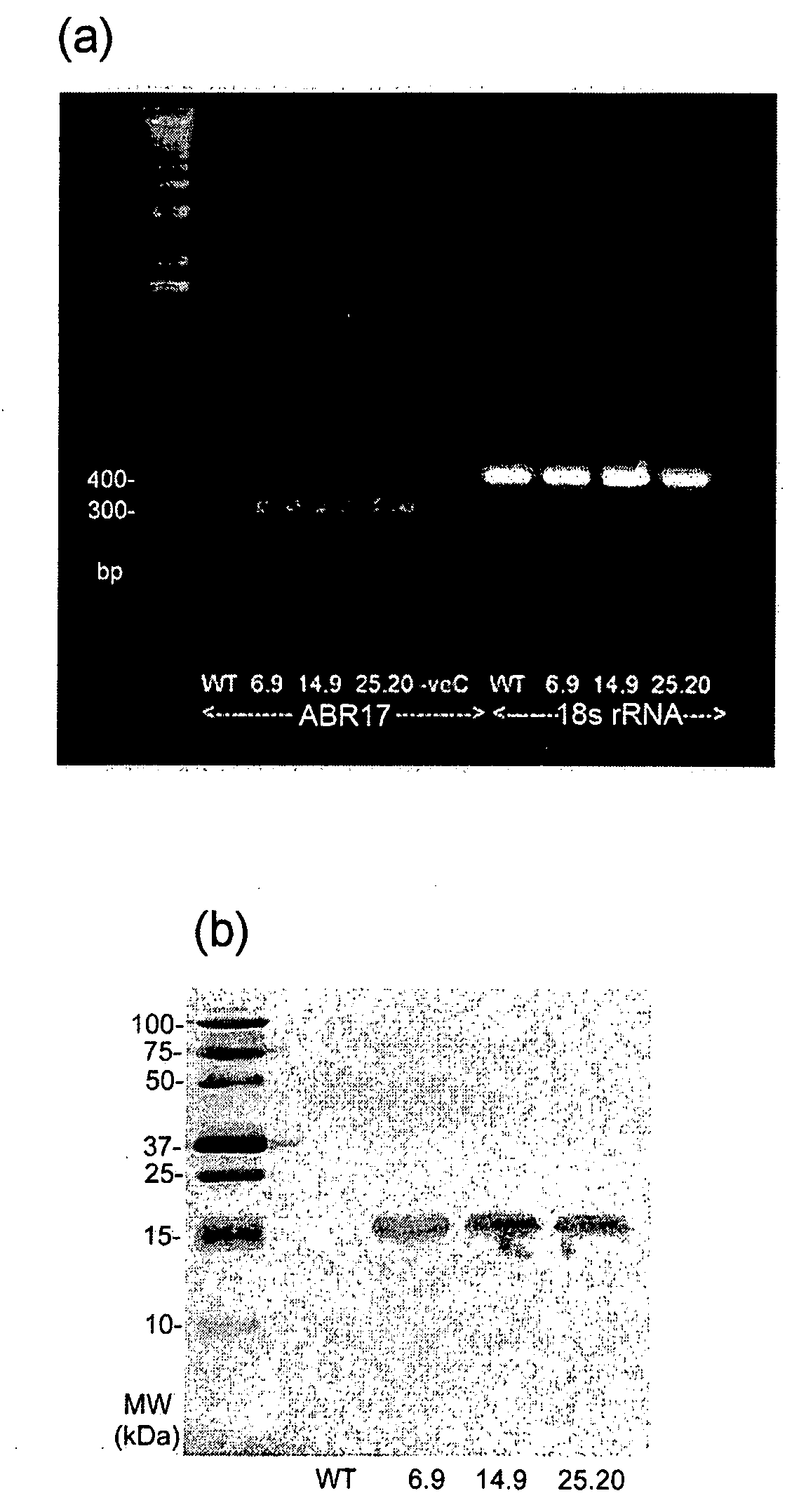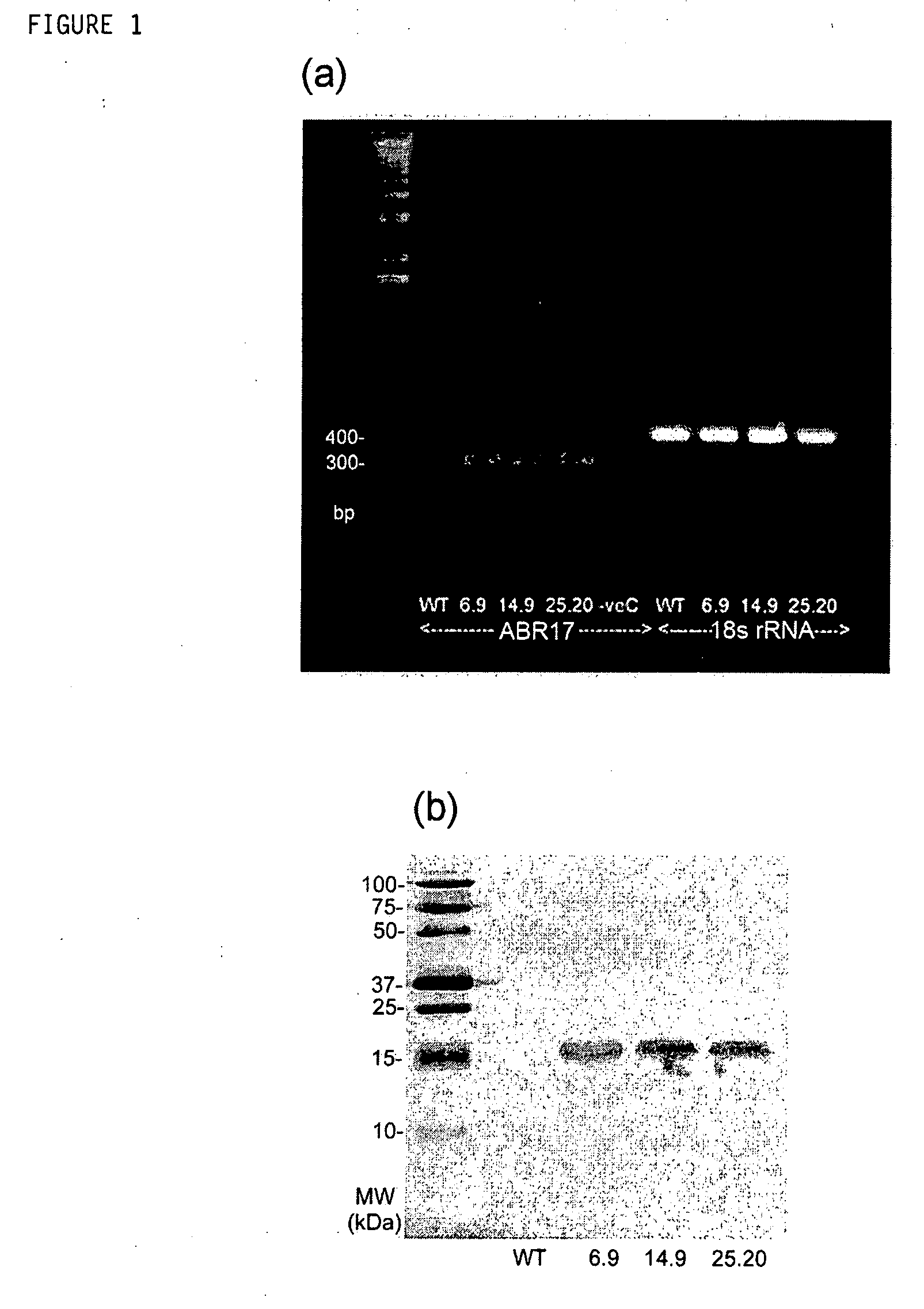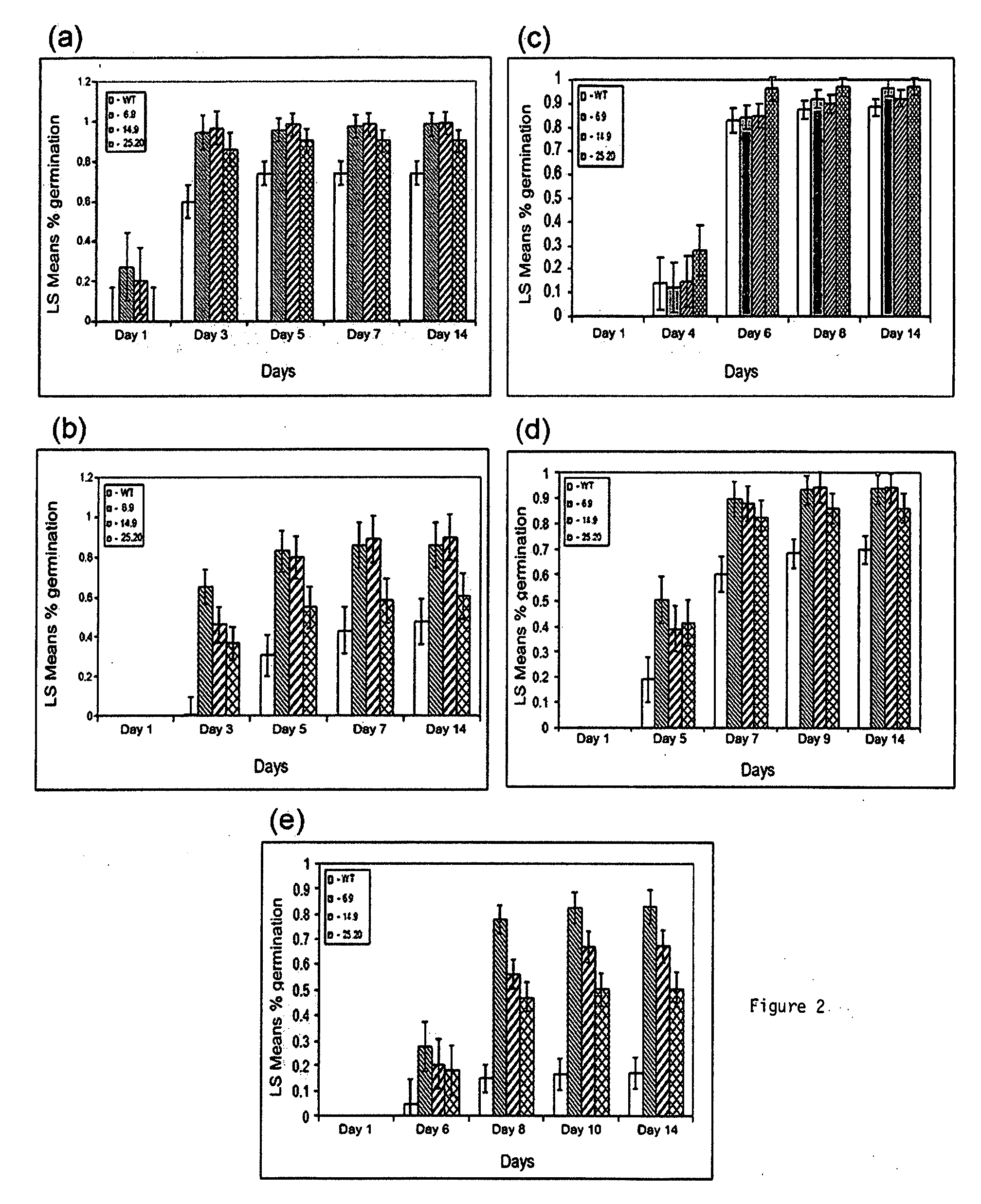Method of conferring multiple stress tolerance and early flowering in plants
a multi-stress tolerance and plant technology, applied in the field of multiple stress tolerance and early flowering in plants, can solve the problems of severe limitation of crop productivity worldwide, significant yield drop, and concomitant reduction of the average yield of most major crops by more than 50%, so as to enhance the tolerance of these plants, enhance the germination of plants, and enhance the effect of tolerance to freezing temperatur
- Summary
- Abstract
- Description
- Claims
- Application Information
AI Technical Summary
Benefits of technology
Problems solved by technology
Method used
Image
Examples
example 1
Plant Expression Vectors
[0081] A pea ABR17 cDNA clone was amplified using as a forward primer having SEQ ID NO: 3: 5′-GTGGTCGAAGCTTATGGGTGTCTTTGTTTTTGATGATGAATAC-3′. This primer, beginning with the ATG (underlined) corresponds to nucleotides 20-49 inclusive, of SEQ ID NO: 1. The sequence of the reverse primer follows, and is SEQ ID NO: 4: 5′-TATATAGCTCGAGTTAGTAACCAGGATTTGCCAAAACGTAACC-3′. This primer, beginning with the TTA (underlined) corresponds to the reverse complement of nucleotides 493-464 inclusive, of SEQ ID NO: 1.
[0082] The restriction enzyme sites Hind III and Xho I are highlighted on the forward and reverse primers, respectively. The amplified cDNA fragment was ligated between the CaMV35S promoter and the rbcS3′ terminator in the binary vector pKYLX71 (Schald et al., 1987) and the resulting gene construct was sequenced to ensure ligation of the cDNA in the correct orientation and the absence of any mutations / rearrangement.
[0083] The gene construc...
example 2
Brassica napus (Canola)
[0113] Constitutive expression of ABR17 cDNA enhances germination under abiotic stress conditions and promotes early flowering in canola (Brassica napus)
[0114] The effect of constitutive expression of Pisum sativum ABA-responsive 17 (ABR17 / PR 10.4) cDNA on DH (doubled haploid) canola (Brassica napus) line was tested to determine its effects on germination as well as other characteristics. We observed increased germination in the transgenic line in salt stress (275 mM NaCl), cold stress (5° C.), and when both the stress conditions were combined (10° C.+75 mM NaCl) as compared to the wild type (“WT”). In addition, we observed a greater rate of flowering, earlier flowering and greater height in the transgenic line when compared to the wild type at 42 days after planting. These results demonstrate that (1) ABR17 enhances germination under saline and cold conditions in canola and (2) ABR17 promotes germination and early flowering in canola when compared to the wi...
PUM
| Property | Measurement | Unit |
|---|---|---|
| temperature | aaaaa | aaaaa |
| temperature | aaaaa | aaaaa |
| Tm | aaaaa | aaaaa |
Abstract
Description
Claims
Application Information
 Login to View More
Login to View More - R&D
- Intellectual Property
- Life Sciences
- Materials
- Tech Scout
- Unparalleled Data Quality
- Higher Quality Content
- 60% Fewer Hallucinations
Browse by: Latest US Patents, China's latest patents, Technical Efficacy Thesaurus, Application Domain, Technology Topic, Popular Technical Reports.
© 2025 PatSnap. All rights reserved.Legal|Privacy policy|Modern Slavery Act Transparency Statement|Sitemap|About US| Contact US: help@patsnap.com



